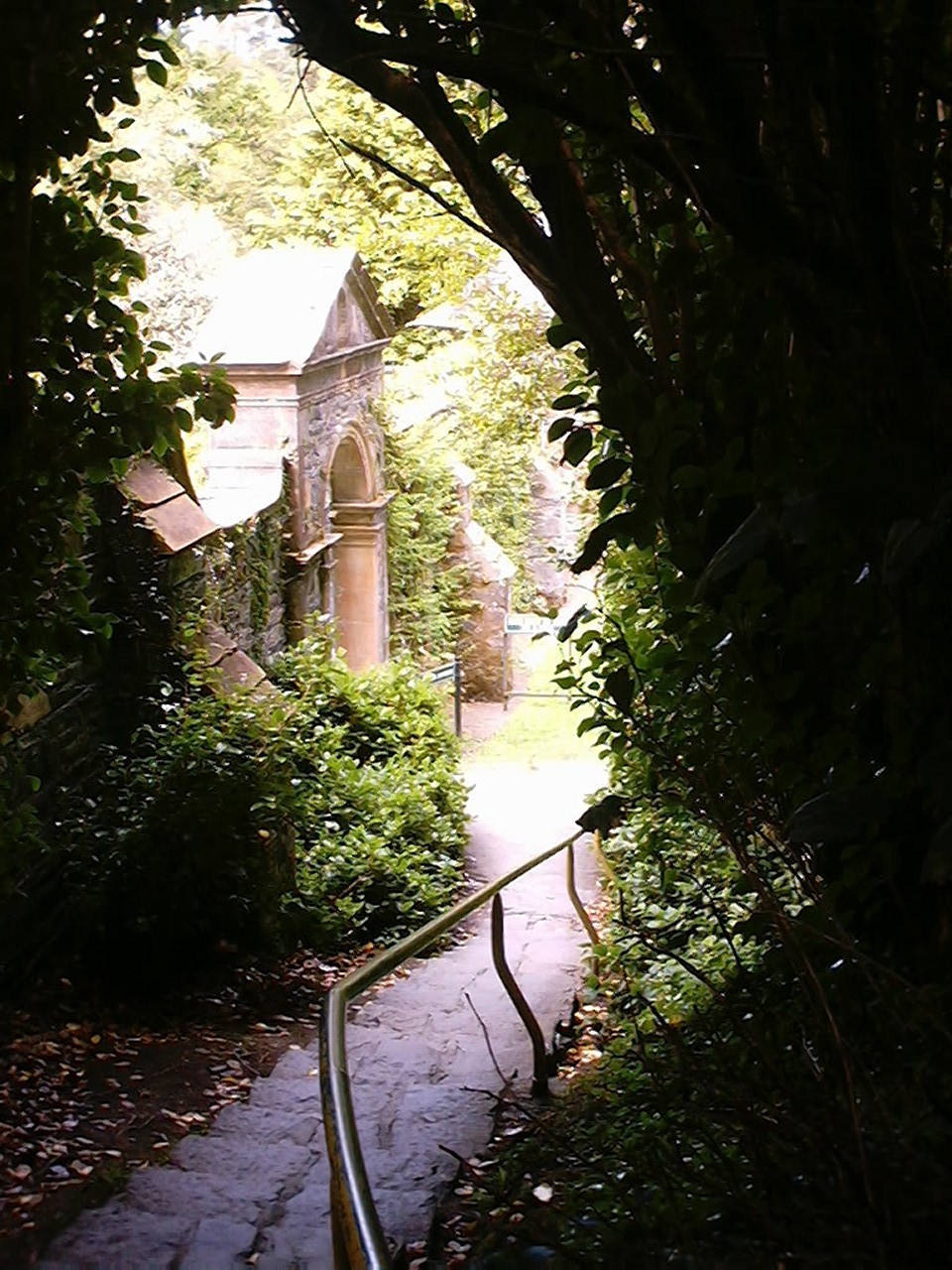Read
Jane Powers'
desciption of Ilnacullin

Garnish or Ilnacullin
Oileán an Chuilinn (Island of the Holly Tree)
Garinis (nearby island)
None found yet.
Garnish
Wikipedia




The minutes-long boat-trip from Glengarriff to Ilnacullin (also known as Garinish Island) in west Cork must be one of the most costly trips in Ireland. £5 a head - adult heads, that is; children's are somewhat cheaper. The boatmen obligingly string out the outward crossing by nudging around amongst the seaweed-coiffured rocks so that passengers can view and photograph the seals basking on their surfaces.
The blobby animals turn their grey, russet and white faces to look at us with a benign air that we take to be friendliness - but perhaps they're just observing wearily yet another boatload of pointing, squealing land-creatures. After all, they see around 80,000 of us a year, making our way to the garden that was miraculously created on a 37-acre piece of windswept rock during the last century.
In 1910, Annan Bryce, a Belfast-born MP, bought the island from the British War Office, which had constructed a Martello tower and garrison there in the previous century. The troops left in 1825, and only a cottager or two remained, growing potatoes, grazing cattle and cutting turf from the sparse bogs. Bryce's plans for this unpromising fragment of heather-and-gorse-clad land were ambitious: to build a stately mansion surrounded by a richly-planted, yet naturalistic landscape, with pockets of intense Italianate formality.
He never got around to the mansion. Instead he concentrated on the gardens, which were designed by the English architect, Harold Peto. But before a single plant could be brought in, the barren rock with its skim of thin soil was blasted to provide deeper niches, and top soil and manure were imported from the mainland. Shelter belts of pine, spruce, cypress and fir were planted. Even with these preparations, it was an audacious gamble. However, Bryce was confident that the mild and moist climate (with over 70 inches of rain annually) would allow him to make an island paradise filled with rare antipodean and oriental plants.

He was right. He began to amass a collection of exotics that took to the soil and growing conditions with gusto. And after his death in 1923, his wife Violet and son Rowland, with the invaluable help of Scotsman Murdo MacKenzie carried on the work. When Rowland died thirty years later, he gave the island garden to the Irish people, and it is now managed by Dúchas, the Heritage Service.
The Bryces and MacKenzie left behind an amazing monument to doggedness and risk-taking. The island is peppered with rare rhododendrons (in flower from December to August), magnolias and countless semi-tender plants, like the tree ferns (Dicksonia antarctica and Cyathea dealbata), Kauri pine (Agathis australis), and the Rimu (Dacrydium cupressinum) from New Zealand.
Head gardener, Bernard O'Leary points out: "These plants were not easy to come by then, whereas now you can get almost anything over the Internet. They would get just one plant and mind it." The Dacrydium came from the Botanic Gardens in Glasnevin, where it had been growing in a glasshouse; the curator was sure it would not survive outside in West Cork, but MacKenzie was delighted to prove him wrong.
The island is full of similar horticultural surprises. Pseudowintera colorata, for instance, with aromatic, multicoloured leaves, grows as a subshrub in its native New Zealand - on Ilnacullin it is over 6 metres tall. Some choice garden plants, meanwhile, seed about on the island to become near-weeds, includingLeptospermum andGaultheria. And in every crevice, there are seedlings ofGriselinia, the hedge plant beloved of suburban and seaside gardeners. The list of exceptional plants would take up this entire newspaper page, and new specimens are continually being added. Most recently, plants of the conifer,Fitzroya cupressoides, and the climber,Berberidopsis corallina , were sent over from theBotanic Gardens in Edinburgh. Both are endangered in their native Chile, the first because of logging and habitat loss, and the second through basket-making. The Ilnacullin specimens will act as a reserve gene bank for these species.

But you don't need to know a single plant-name to appreciate this island jewel, its watery setting enfolded by the rough mountains of Cork and Kerry. Harold Peto was ingenious in placing his strictly classical buildings where they frame the wildness beyond with the lyrical intensity of a 16th century Italian painting.
And it is, unfortunately perhaps, this combination of architectural skill and plantsmanship that makes this beautiful island's fragile fabric a destination for hundreds of coach tours. When we visited, the narrow paths and open spaces were teeming with tourists, many of them unaware of the unlikely wonders that have been worked on this heretofore bleak island. Mobile phones and even walkie-talkies made themselves heard over the constant hubbub of human voices and cries. The small, but dedicated staff are overwhelmed with the business of people-management. Which is why, if you are planning a visit, go now, or in early spring when you may be able to recapture some of the frail magic.
Ilnacullin is usually open from March 1st until October 31st. There is a charge for admission. Inquiries: 027-63040.